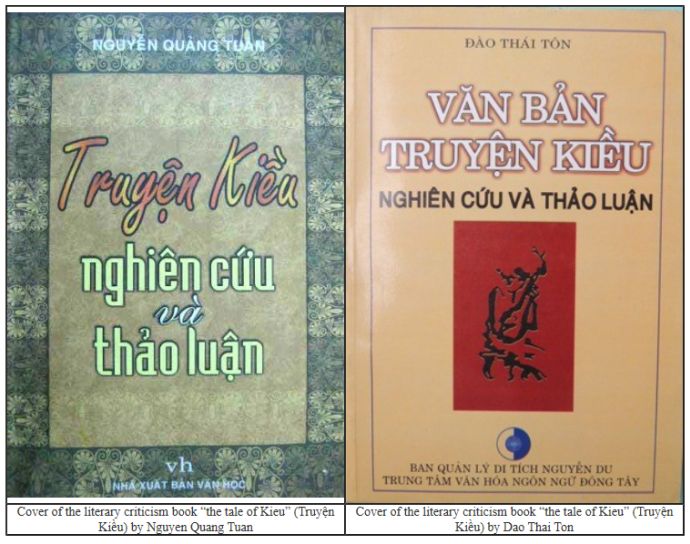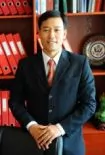
Introduction
According to the Havard University, fair use is the right to use a copyrighted work under certain conditions without permission of the copyright owner1 . The most robust and widely used limit on U.S. copyrights is fair use although the U.S., like the EU, has adopted many specific exceptions to copyright's exclusive rights according to authors Pamela Samuelson and Kathryn Hashimoto2 . Consequently, use or reproduction of a copyrighted work, whether in part or in full, in some circumstances may not constitute an infringement, even where the copyright right holder has not granted any permission, if such use of or making a copy of copyrighted material falls into the so-called "limitations and exceptions" on the right holder's exclusive right to the reproduction, which always attach to "three-step test" provided by the Berne Article 9(2)3 . Accordingly, "fair use" or "limitations and exceptions" are widely recognized legal concepts to defense that an act of use or making a reproduction of other's copyrighted works without permission shall not constitute an infringement of copyright. In Vietnam, the practice of fair use defense at Vietnamese courts or administrative agencies is very poor and rare, except for an interesting lawsuit heard by Vietnamese courts that we think that it deserves to be classified as third classic IP-related lawsuit as written and commented below.
Glad to win at the court of first instance
The copyright dispute occurred between 2001 and 2003 between two the famous Kieu researchers, Mr. Nguyen Quang Tuan4 and Mr. Dao Thai Ton5 , whereby Mr. Nguyen Quang Tuan - the plaintiff brought a civil action against Mr. Dao Thai Ton - defendant for using (copying) verbatim 4 literary critic papers of the tale of Kieu by plaintiff without permission and without compensation. Specifically, in 2001 four plaintiffs' literary criticisms were published in "Tạp chí Văn học", "Báo Văn Nghệ" and "Tạp chí Văn nghệ" but found by the plaintiffs that they had been copied literally by the defendant to print the defendant's book without permission.
The defendant's book was titled "Văn bản Truyện Kiều – Nghiên cứu và Thảo luận" (the Tale of Kieu - Research and Discussion) published by the Writers Association Publishing House in 2001. In 2003, the defendant agreed to have the Nguyen Du Relics Management Board (Ha Tinh) reprinted the book above resulting in the dispute between the two parties and consequently the plaintiff sued the defendant for copyright infringement. The defendant's book has 2 parts, part 1 is the defendant's analysis and commentary on the Tale of Kieu and part 2 collects 10 articles of other authors on the same topic of criticizing the Tale of Kieu, among these 10 articles has 4 authored by the plaintiff.
The first-instance civil judgment no.68/2006/DSST of the Hanoi People's Court decided in favor of the plaintiff, stating that the plaintiff's 4 articles were printed without his permission constituted an infringement of copyright under which the defendant is ordered to apologize to the plaintiff and pay damages of VND 26,040,000.
But disappointed at the appeal court
Because the first instance verdict no. 68/2006/DSST was appealed, the case was appealed by the appelate court as the Bench Court of the Supreme People's Court. On June 14, 2007, the appellate court issued ruling no. 127/DSPT canceling the first instance judgment, in which the court found:
- The defendant is forced to literally quote the plaintiff's four articles to point out 82 errors (a total of 16,545 words in four articles but up to 82 errors) of cognitive mistakes that in his commentary Mr. Ton criticized Mr. Tuan that Mr. Tuan was dishonest and weak as to expertise, but until the time of the dispute, Mr. Tuan did not have any argument back. Therefore, the defendant embodied the entire debate for the purpose of researching and disseminating information as a result of mandatory inclusion of the plaintiff's four articles into his book to help readers grasp the whole debate.
- The plaintiff's articles are not garbled, concatenated, distorted, and the author's name is still credited in the book so it clearly shows that the origin of work and author. And although it is "verbatim printing ", that act by the defendant is in nature quotation, because the defendant interposed the paragraphs in the plaintiff's papers with his comments with the purpose is to make it easier for the reader to compare and identify errors in the plaintiff's papers. Therefore, it must be affirmed that this is a scientific research work, a whole creation by the defendant, but this is not merely a collection of articles by multiple authors to print them as a book with the commercial purpose.
- In fact, the defendant received 7,000,000 VND in royalties, which was the money related to his work "the Tale of Kieu - Research and Discussion" in accordance with the law on royalties (remuneration), the defendant was also not shared profits from printing of works by the publishers, whereby the defendant did not receive the money with respect to the four plaintiffs' articles.
- Comment on the applicability of the laws by the lower court, the Court of Appeal on the one hand said that the first instance court was right to apply the law to solve the case but on the other hand, it considered that the defendant did not infringe upon plaintiffs' copyright pertaing to 4 articles because Article 760 of the Civil Code of 1995 stipulates that individuals and organizations may use works of other people, which had been published, without asking for permission and also without paying remuneration to the authors or owners6 .
Our comments
- In order to accurately resolve the dispute, the court must answer two important legal questions: (a) whether does the act of copying (or quoting) an original work of another for putting into his/her own work fall into any of 10 circummstances stated by the laws as "forms of use of the work without asking for permission and without compensation" under Article 761 of the 1995 Civil Code?; and (b) to what extent does the quotation of other's copyrighted work remain within the threshold deemed as fair use?
- To determine "fair use" available or not, it is imperative that we understand the very important legal principle that is a "three-step test". Fair use is essentially another way of interpreting an exception that does not infringe copyright, as stated in Article 9 (2) of the Berne Convention, which states that "it shall be a matter for legislation in the countries of the Union to permit the reproduction of such works (1) in certain special cases, provided that such reproduction (2) does not conflict with a normal exploitation of the work and (3) does not unreasonably prejudice the legitimate interests of the author". Interestingly, even at the time of acceptance and hearing this case, although Vietnam had not yet participated in the Berne Convention, we found the 3-step test rule included in the Civil Code in 1995, ie. Articles 760 and 761. Specifically, step 1 "some special cases" in Article 761 specifies 10 special cases that allow the use of work without permission and without payment including circummstance of "quoting works without distorting the author's opinion to comment or illustrate in his work"; step 2 "does not conflict with normal exploitation of the work" and step 3 "does not unreasonably harm the legitimate interests of the author" as stated in Article 760. As such, the fact that the court forgot the 3-step test was the main reason that the appellate court issued an inadequate judgment and was also criticized by the academy as lacking in logic7 .
- A quote is a quote but it cannot automatically transformed into literal copy or reprinting of another's entire work because quote or quotation means "a sentence or phrase taken from a book, poem or play, repeated by others" according to the online English dictionary Collins8 . Thus, the court's judgment that the defendant who used a verbatim copy of all of 4 articles without paying remuneration is obviously completely wrong.
- Even if the appellat court assumes that the defendant's use of the plaintiff's four articles is legal, the court still erred in that it missed the legal link between articles 760 and 761, that is, the court should have concurrently and simultaneously reviewed both articles since the exceptions to copyright infringement said in article 761 apply only where they "do not conflict with the normal exploitation of the work" and also "do not unreasonably harm the lawful interests" of the plaintiff as provided by article 760.
- In addition, another mistake that the appellate court made is that copyright protected by law subsisted at the time it is fixed in the tangile medium and created by author with his/her labor and skill (originality) but not entirely dependent its content, quality, form, mode and language. That means that the defendant's justification that he was forced to copy the plaintiff's four articles in verbatim for the purpose of criticism is completely unconvincing.
Footnotes
1 See https://ogc.harvard.edu/pages/copyright-and-fair-use
2 See: Pamela Samuelson (University of California, Berkeley - School of Law) and, Kathryn Hashimoto (University of California, Berkeley - School of Law), "Is the U.S. Fair Use Doctrine Compatible with Berne and TRIPS Obligations?" available at the link: https://papers.ssrn.com/sol3/papers.cfm?abstract_id=3228052
3 See more about the "three- step test" at our previous article at the link: http://bross.vn/newsletter/ip-news-update/IS-THE-THREESTEP-TEST-AS-DISMISSAL-OR-APPROVAL-OF-FAIR-USE-DEFENSE-AGAINST-COPYRIGHT-OR-RELATED-RIGHTS-INFRINGEMENT-CLAIM-FORGOTTEN-IN-VIETNAM
4 The late scholar Nguyen Quang Tuan (1925-2019) was a famous Han Nom scholar and researcher of Vietnam, especially the researches on the Tale of Kieu. He was awarded the John Balaban Award in 2010 by the Nôm Heritage Conservation. See: https://vi.wikipedia.org/wiki/Nguy%E1%BB%85n_Qu%E1%BA%A3ng_Tu%C3%A2n; and https://en.wikipedia.org/wiki/John_Balaban
5 The late scholar, Associate Professor, Dr. Dao Thai Ton is also a famous researcher on the Tale of Kieu. For his study of the Tale of Kieu – bản Liễu Vân Đường 1871, he was awarded the John Balaban Prize in 2010. See more (Vietnamese): https://tuoitre.vn/dua-tien-nha-nghien-cuu-dao-thai-ton-441433.htm
6 Article 760.- Restriction to the author's rights
An individual or organization is entitled to use a work of another which has been published or disseminated, provided that such work is not banned from reproduction and its use is not aimed at business purposes and does not affect the normal exploitation of the work, not detrimental to other interests of the author or owner of the work; an individual or organization using such work shall not have to ask permission from and pay remuneration to the author or owner, provided that he/she must record or mention the name of the author and the origin of the work.
7 According to the scholars TS. Do Van Dai and TS. Le Thi Nam Giang, Hochiminh city's University of Law, Mr. Ton's act is not considered a quote because here Mr. Ton has verbatim reprinted four original articles of Mr. Tuan as the judgment of the bench court also asserted as "literally printing". Two scholars argue that this argument of the Court of Appeal is unreasonable because the act of quoting is different from the act of printing verbatim of a work because it is not necessary to comment on a work that we must quote another's whole works. See more: https://www.agllaw.com.vn/ve-van-de-trich-dan-tac-pham-cua-nguoi-khac/
8 Xem: https://www.collinsdictionary.com/dictionary/english/quotation
The content of this article is intended to provide a general guide to the subject matter. Specialist advice should be sought about your specific circumstances.


